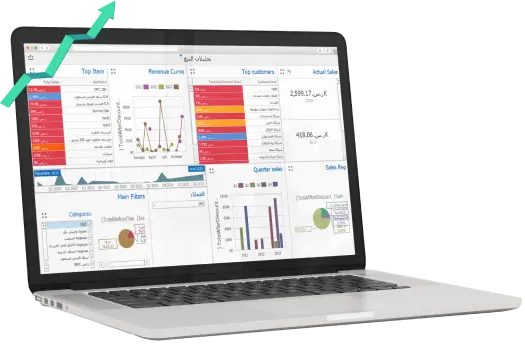Accounting Treatment of Short-Term Loans
One of the most important duties and responsibilities that a bank accountant should be aware of the accounting treatment of short-term and long-term loans because each type of loan has different accounting treatment
Short-term loans and credit facilities are often used to make payments to suppliers, whether local suppliers or foreign suppliers, and part of the loan or facility amount that the bank grants to the company as a liquidity used by the company, and this is shown in the facilities agreement
Let's assume that the bank granted the company a facility of 10 million (divided into 8 million for the payment of checks and suppliers facilities, and 2 million cash)
The company decided to withdraw 500,000 in cash from the facility amount to pay employees’ salaries, and the journal entry is as follows
|
Account |
Debit |
Credit |
|
Bank Account - National Bank of Egypt |
500,000 |
|
|
Loan Account - National Bank of Egypt |
|
500,000
|
Thus, the available liquidity is 1,500,000 pounds
The company paid a check to a supplier of 850,000 pounds to a foreign supplier, and the journal entry is as follows
|
Account |
Debit |
Credit |
|
Accounts Payable |
850000 |
|
|
Notes Payable |
|
850000 |
When the check is due, the journal entry is as follows:
|
Account |
Debit |
Credit |
|
Notes Payable |
850000 |
|
|
Loan Account |
|
850000 |
Thus, until now, the availability of the loan account to pay suppliers will be 7150000 (8,000,000-850000)
Thus, for each transaction, the bank accountant must know what is available for him as liquidity and what is available for payment to suppliers
When the company pays the loans (amounts withdrawn from the facility account) whether the loan is paid fully or partially and let's assume that will be paid 500,000 the first loan amount on its due date and the accounting treatment will be
|
Account |
Debit |
Credit |
|
Loan Account - National Bank of Egypt |
500,000 |
|
|
Bank Account - National Bank of Egypt |
|
500,000 |
Loans and facilities have interest, are mostly monthly and in a case, for example, interest was 70,000 on January and were deducted from company accounts at the end of January, the journal entry is as follows:
|
Account |
Debit |
Credit |
|
Interest Expense |
70000 |
|
|
Bank Account - National Bank of Egypt |
|
70000 |
According to the company's agreement with the bank regarding the interest, whether it be deducted from or included in the company's current account or the loan account and the best for the company is that it is deducted from the current account because if it is included in the loan account, the debit balance will increase and thus the value of the interest on the company increase in the next period, on the contrary, the current account, it does not have the interest, but if it is to be deducted from the current account, the value of the interest must be covered monthly before its due date, and the whole subject matter according to the company’s agreement with the bank when signing the loan facility agreement
In the event that the interest of January is 70,000, for example, the bank will deduct it from the company's accounts on February. In this case, an adjusting journal entry will be created at the end of January, and the journal entry is as follows:
|
Account |
Debit |
Credit |
|
Interest Expense |
70000 |
|
|
Interest Payable |
|
70000 |
On February
|
Account |
Debit |
Credit |
|
Interest Payable |
70000 |
|
|
Bank Account - National Bank of Egypt |
|
70000 |
In the loans and facilities calculation, the bank calculates an interest or an expense on the highest debit balance during the month, for example, let say 1600000 and is calculated on the highest debit balance commission, which is 0.001 of the amount's value
1600000 x 0.001 = 1,600 pounds
The journal entry is as follows:
|
Account |
Debit |
Credit |
|
Interest Expense |
1600 |
|
|
Bank Account - National Bank of Egypt |
|
1600 |
And of course, there are expenses and bank commissions monthly and the journal entry is as follows:
|
Account |
Debit |
Credit |
|
Bank Charges |
XXXX |
|
|
Bank Account - National Bank of Egypt |
|
XXXX |
Calculation and review of interest
The treasury management must monitor review the loan interest, the highest debit balance commission, and all the expenses and commissions that the bank calculating them on the company, and the interest calculation is stipulated in the facility contract and the interest in the facility account will be variable (loan interest from the central bank + interest rate (let say 1.5%))
Also, it must be stipulated in the contract, the loan maturity date, for example, 90 days or 120 days, according to the company's agreement with the bank, meaning that every amount borrowed from the bank is as a loan that the company must pay during this period, otherwise, a commission on late payment will be imposed on it, in addition to, an increase the value of the interest, and the interest is calculated daily on the debit balance, and there are banks that make each amount that the company borrowed as a separate loan and the interest is calculated on it separately. For example, if the company obtained a loan of 150,000 on 1-10, then the accrued interest on this loan is calculated separately and when the company obtained another loan of 100,000, for example, that interest is also calculated on this loan separately until the loan is fully paid and the interest calculation for this loan stops
There is another system for calculating interest in other banks, which is that interest is calculated on the total debit balance during the period and not on each loan separately, and bank interest, in general, is calculated as follows:
Balance x (Number of Days / 360) x interest rate
The debit balance is the value of the loan balance on the company, and the more part of the loan value is paid, the smaller the balance on which interest is calculated
As for the number of days: in principle, the interest of the loans is calculated daily, and the interest is included in the company’s accounts monthly, whether in the loan account or deducted from the current account, the best is that it is deducted from the current account because it is the current account has no interest, but in the event that it is included in the loan account, the value of the interest increases due to the increase in the value of the loan. So if the company obtained a loan of 100,000 on 10/3/2019 until the end of January, no part of the loan was not paid and the interest rate was 15%, in this case, the interest that the bank will calculate is
100000 x (20/360) x 15% = 833 pounds
20 days is the period from the date of obtaining the loan until the end of the month, even if we assume that on April 16, the company paid 50,000 of the loan amount
In order to calculate the accrued interest for the month of April
First, the interest is from 4-4-2019 to 16-4-2019
100000 x (16/360) x 15% = 666.66 pounds and so the company paid 50,000 on April 16, then the debit balance of the loan is 50,000, and the interest is calculated for the period from April 17 to April 30
= 50000 x (14/360) x 15% = 291 pounds
So the accrued interest on the company is 833 + 291 = 1124 pounds
There are also some commissions and administrative expenses other than interest and commission on late payment, which is the highest debit balance commission, meaning that the highest debit balance commission is calculated during the month, which is within (0.001) of the highest balance on the company or according to the percentage agreed upon in the contract
The treasury management should review the interest and commissions of the loan with the bank according to the company’s accounts, and that it should be reviewed periodically monthly to prevent manipulation
Accounting Treatment of Long-Term Loans
The difference between short-term loans and long-term loans is that long-term loans are received the full value of the loan when the bank agrees to grant the company the loan. As for the methods of long-term loan payment, they differ according to the agreement with the bank, meaning whether the loan and interest are paid in equal installments during the loan period in case stable interest rates, or payment of the loan in unequal installments
Let's assume that the value of the loan was 20 million for a period of five years, at a fixed interest rate of 10% annually, for example, and to be paid in half-yearly installments (the value of the annual installment is 2590091.50)
The installments are semi-annual and the loan payment period is 5 years, so the number of installments = 5 x 2 = 10 installments
First, the accounting treatment when the company obtains the loan and deposits its value in its current account at the bank
|
Account |
Debit |
Credit |
|
Bank Account - National Bank of Egypt |
20000000 |
|
|
Loan Account - National Bank of Egypt |
|
20000000 |
The value of the installment includes two parts (the first part includes the due part of the original loan amount and the second part is the interest value)
There is a function in Excel (PMT) by which the payment for a loan based on constant payments and a constant interest rate is calculated, and it is calculated on an Excel spreadsheet in this way
The interest of the first installment = 20,000,000 x 10% x 12/6 = 1,000,000
The monthly interest = 100,000 / 6 = 166667
The journal entry each month from January to June
|
Account |
Debit |
Credit |
|
Interest Expense - National Bank of Egypt |
166667 |
|
|
Interest payable |
|
166667 |
This interest for six months, and according to the accrual principle, every month must be allocated to its proportion of the interest, and the monthly journal entry for loan interest
The value of the fixed installment is 2590091.50, so the paid portion of the loan value = 2590091.50 - 1000000 = 1590091.50
The accounting treatment is as follows when paying the first installment at the end of June, for example
|
Account |
Debit |
Credit |
|
Interest Expense |
1590091.50 |
|
|
Interest payable |
1,000,000 |
|
|
Bank Account - National Bank of Egypt |
25900910.50 |
At the end of December, the second installment will be paid, which is 2590091.50, which also, as mentioned, includes two parts (part of the original loan + the amount of accrued interest)
The current balance of a loan after paying the first installment = 20000000-2590091.50 = 17409908.50
And the accrued interest for the period from July to December = 17099080.50 x 10% x 6/12 = 870495
Thus, the paid portion of the original loan = 2590091.50-870495 = 1719596.50
And the monthly accrued interest for the period from July to December = 870495/6 = 145082 pounds
A monthly adjusting journal entry for interest is created at the end of each month, from July to December, with this journal entry
|
Account |
Debit |
Credit |
|
Interest Expense - National Bank of Egypt |
145082 |
|
|
Interest payable |
|
145082 |
(Recording accrued interest for July)
When paying the value of the second installment due, the journal entry is as follows
|
Account |
Debit |
Credit |
|
Interest Expense |
1719596.50 |
|
|
Interest payable |
870495 |
|
|
Bank Account - National Bank of Egypt |
25900910.50 |
And so on with the rest of the installments and the value of the installment paid to the bank on its due date, which is 2590091, but when recording the journal entry, it must be noted that the value of the interest will be diminishing and its value decreases when each installment is paid compared to the previous period because the value of the loan balance decreases when paying an installment of the value of the loan because interest is calculated on the current debit balance
In the event that the interest is variable, the value of the installment will not be fixed due to the difference in the interest rate in each period from the previous period









